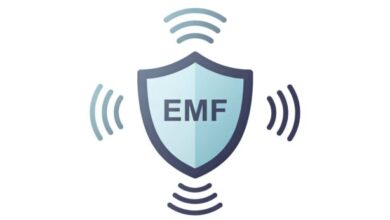The Significance of High-Speed Internet Connectivity to Distance Learning in Rural Areas
In rural areas, high-speed internet connectivity has the potential to make education more accessible. In the past, students would travel to Walmart or McDonald’s to take live classes. But with high-speed Internet, they can take classes from their homes. And what’s more, it costs less than the cost of a traditional classroom.
Access To High-Speed Internet
Providing high-speed internet connectivity for rural students is critical to distance education. Without high-speed Internet, students lose out on vital educational opportunities and may fall behind their classmates. But while urban districts often have fiber and cable options, rural schools may have different technology. Satellite internet technology, in particular, can help rural schools overcome this problem. Until recently, rural schools could only get high-speed Internet connectivity in community libraries or schools. As a result, many K-12 schools in remote or rural areas closed or converted to distance learning. While the shift to online learning made it possible to reach the entire world, some rural students continued to learn at home for various reasons.
Challenges Of Providing It
Currently, rural areas have few options for high-speed Internet access. Most rural areas are served by dial-up, satellite, or DSL internet service, and these are often more expensive, less reliable, and subject to weather and other factors. Plus, these options often need to be faster to run the sophisticated digital learning software students need to complete their coursework and download textbooks. Furthermore, they do not allow students to stream high-definition videos, which is essential for successful distance learning. Despite these challenges, rural communities do not give up on education. There is a growing awareness of broadband inequities, particularly as school systems increasingly transition to distance learning. The CARES Act funding the federal government provides a good place to start improving rural broadband infrastructure. Rural schools can use this funding to buy devices like tablets, hotspots, and home routers. However, these solutions will only be effective if the state government prioritizes improving its rural broadband infrastructure. Thus, the government and other sectors should prioritize wireless internet for rural areas to support the education of the students in those places.
Benefits
A high-speed internet connection can help rural communities compete in an increasingly global marketplace. With a broadband connection, small businesses in rural areas can reach a larger audience and increase sales. Many rural residents also want to stay connected to social media. Without an Internet connection, they’ll miss important news updates. Rural residents can access local, national, and international news using social media.
With the growth of broadband, the geographical boundary between rural and urban areas is becoming increasingly blurred. Broadband is becoming more accessible, making it easier to work and study in rural settings. Even if a rural community lacks a high-speed connection, it can still participate in online education and earn a degree. High-speed Internet can improve learning experiences for students, teachers, and parents. Broadband speeds can also enhance hands-on learning opportunities and increase engagement. High-speed Internet connectivity is also essential to distance learning. Moreover, a reliable rural wireless internet e is essential to participate in online courses. A reliable connection to the Internet can improve a rural community’s ability to compete in the global market. Furthermore, high-speed internet connectivity can boost local businesses’ productivity and income.
Cost
Many rural areas struggle with access to high-speed Internet. Many do not have traditional ISPs, and there are few incentives for ISPs to install high-speed Internet in rural areas. In some cases, governmental intervention is required to build and maintain broadband connectivity in rural areas, especially tribal lands in the Western U.S. Satellite internet and wireless Internet are not cost-effective solutions for rural areas. Additionally, some tribal areas lack electricity and running water, making them particularly difficult to connect. While many rural areas are struggling with the cost of high-speed internet connectivity, they can take advantage of federal relief funds to close the digital divide. For example, a nonprofit organization in Cleveland provides internet access for $18 a month to underprivileged families. Its model could be replicated in many states.



